SCHOCH TILE
STONE
Strength and Stability
Stone By Schoch
Click Each Section For More Details
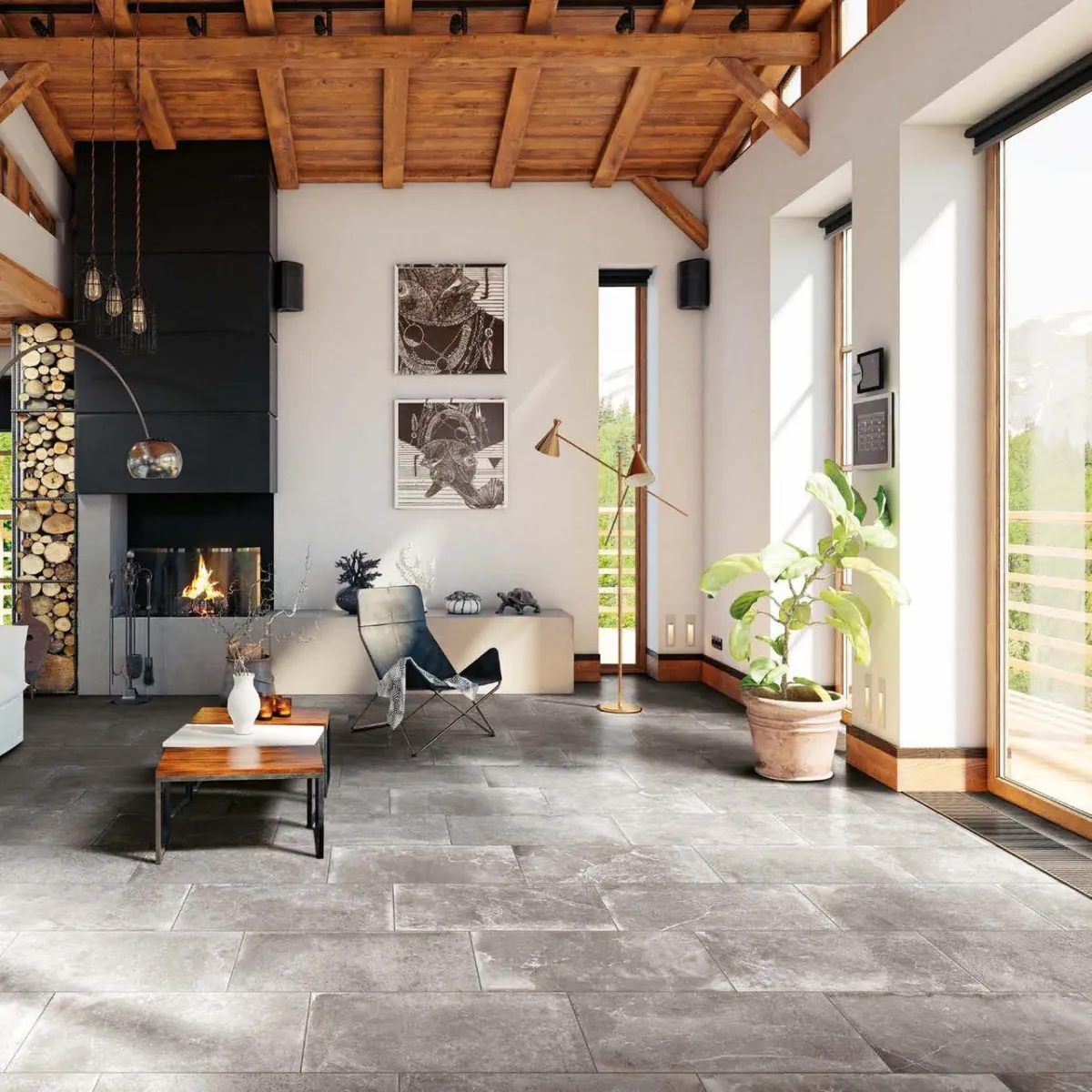
WHY DESIGN WITH NATURAL STONE?
Natural stone is strong and stable. It exudes a rich, organic, beautiful surface and has a confident, timeless presence in any room. Walk across a natural stone floor and tread on the same material quarried and constructed by ancient people of nobility and notoriety. From ancient monuments like the pyramids in Egypt and the majestic Greek and Roman temples to the great civilizations of India and China, natural stone has been an important part of architecture throughout history. It’s the world’s oldest building material. Imagine its beauty and elegance in your new home.
Recent advances in the stone industry’s equipment technology have greatly impacted the process of extracting stone from the quarry and installing it in a home. Modern tools can accomplish this with such speed and efficiency now that natural stone is accessible to all and is beloved for its durability, personality, and aesthetics. While it is typically more expensive than ceramic tile, natural stone will always increase your home’s resale value.
Today there is a large selection of natural stone from which to choose. We invite you to discover the many wonderful facets of natural stone and see if it is the right flooring for you.
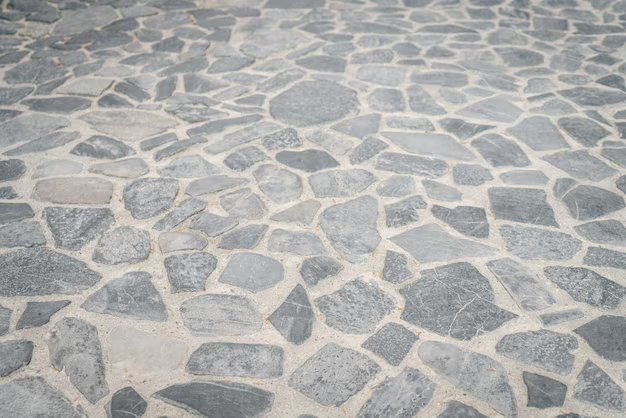
NATURAL STONE IS THE WORLD’S OLDEST FLOORING
The production of natural stone is part art and part science. It is the convergence of transition and technology. It is a combination of the inspirational and the industrial.
For thousands of years, a combination of heat and pressure created blocks of natural stone, including granite, marble, travertine, limestone, and slate. As the Earth’s crust began to grow and erode, it pushed minerals up from its core, forming massive rock deposits, which we refer to as quarries. Quarries are found in many counties throughout the world. People who have been quarrying stone for generations, work with precision and passion, with expert selection skills, and a devotion to their craft that is second to none.
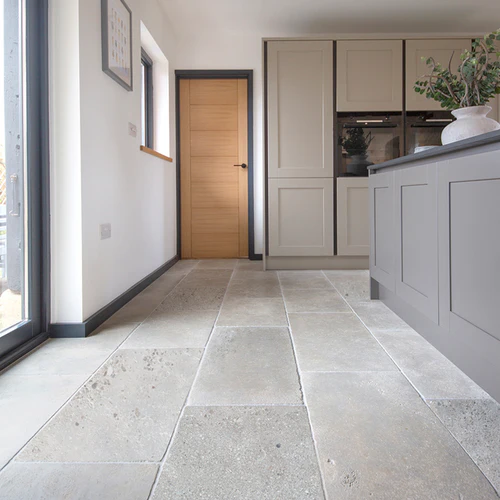
THE FABRICATOR MAKES IT FABULOUS
At the fabricator’s facility, the slab is customized for specific installations. Edges are shaped and polished. This is done with a series of small saws or router bits, which again, are diamond-studded and water cooled. They rotate at high speeds and pass along the edges of the slab to shape the sides into the desired edge detail.
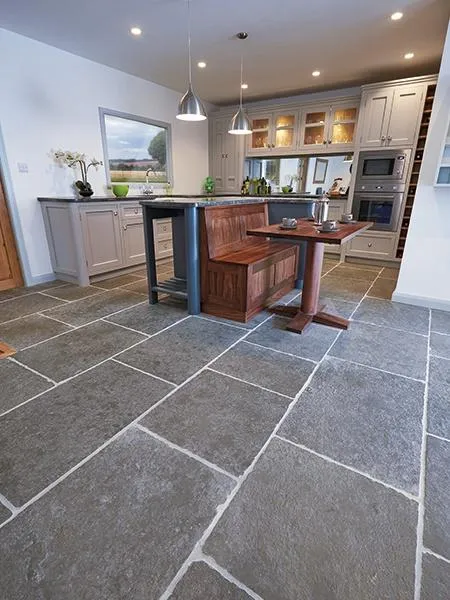
MANUFACTURED STONE: THE SYNTHETIC STONE PRODUCT
Manufactured stone, also known as agglomerate stone, is a synthetic stone made from natural stone chips suspended in a binder such as cement, epoxy, resin, or polyester. Some of the most popular types of manufactured stone products are those made mostly of quartz. The natural quartz gives the product depth and radiance, while at the same time strength and consistency. It offers you the look of natural stone, but also can be a more cost-effective option.
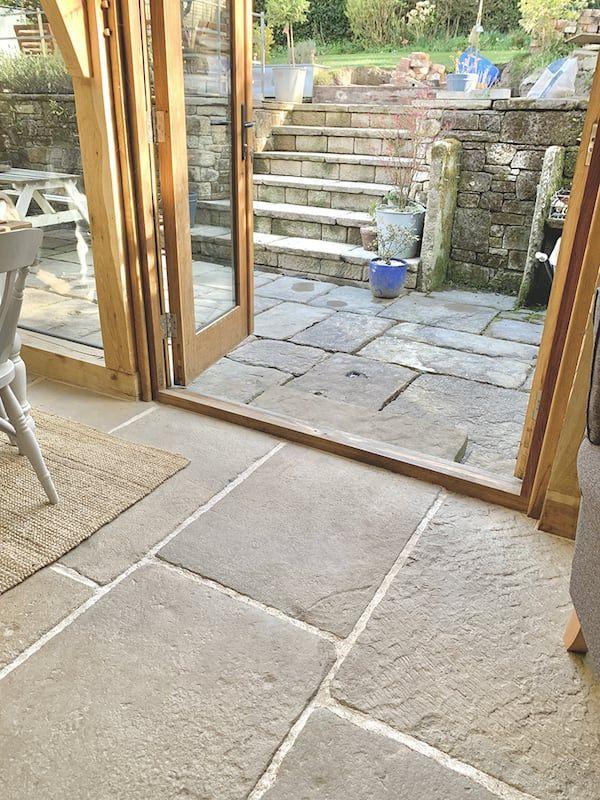
NO TWO NATURAL STONE FLOORS ARE THE SAME
Each floor will exhibit its own unique coloring, veining, and natural characteristics. Each has a style all its own, a one-of-a-kind personality. Natural stone floor tile sizes are 12” x 12”, 13” x 13”, 16” x 16”, and 18” x 18”. Natural stone is also available in mosaics which are comprised of pieces 3” or smaller and are often attached to a mesh backing.
There are two types of edges for natural stone floor tile: a polished bull nose edge that has a rounded or curved appearance, or a polished straight 90-degree edge that gives a more modern and cleaner look to your space.
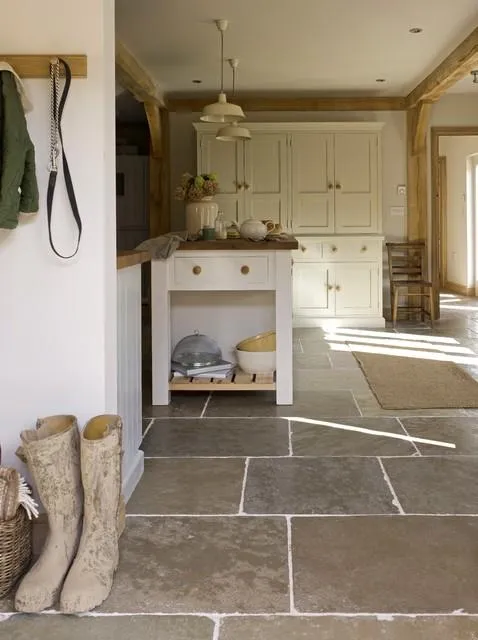
ALL NATURAL STONE IS FABRICATED WITH A PARTICULAR TYPE OF SURFACE FINISH
Some common types of surface finishes we see today are polished, honed, acid-washed, saw-cut refined, flamed, split faces, tumbled, and brushed.
A polished surface creates a beautiful glossy shine from the natural reflection of the stone’s crystals. The mirror-like shine is accomplished by using progressively finer polishing heads during the polishing process. Granite, marble, and limestone are frequently polished.
A honed surface provides a flat, matte, or satin finish creating a more informal and softer look. This finish is created by stopping short on the last stage of polishing. A honed finish shows fewer scratches and requires very little maintenance. Marble, limestone, and slate would be your best choices for a honed finish.
An acid-washed finish is shiny with small etching marks or pits in the surface. This finish shows fewer scratches and is much more rustic in appearance. Most stones can be acid-washed, but the most common are marble and limestone. Acid-washing is a way to soften the shine on granite.
A saw-cut refined finish offers you a matte finish. After the initial cutting, the stone is processed to remove the heaviest saw marks, but not enough to achieve a honed finish.
A flamed finish is achieved by heating the surface of the stone to extreme temperatures, followed by rapid cooling. The surface of the stone pops and chips, leaving a rough, unrefined texture. This process is usually done with granite. Flamed granite has a highly textured surface, making it ideal for areas where slip resistance might be a concern.
Split-faced finishes give you a rough texture, but one not as abrasive as flamed. This finish typically is achieved by hand cutting and chiseling at the quarry, exposing the natural cleft of the stone. This finish is primarily done on slate.
A tumbled finish delivers a smooth or slightly pitted surface and broken, rounded edges and corners. There are several methods used to achieve the tumbled look. Marble and limestone are your primary candidates for a tumbled finish.
A brushed finish features a worn-down look achieved by brushing the surface of the stone, simulating natural wear over time.
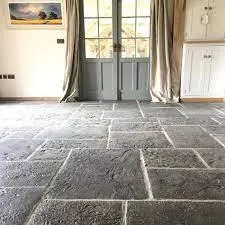
WHAT TO KNOW BEFORE YOU BUY NATURAL STONE
Natural stone offers you virtually endless types, styles, and price points. With natural stone, knowledge really pays off. The beauty of natural stone is that no two pieces are ever the same. Each piece has its own natural characteristics, so your floor will truly be unique. Appearance may vary from tile to tile but that only adds to the elegance and charm of natural stone.
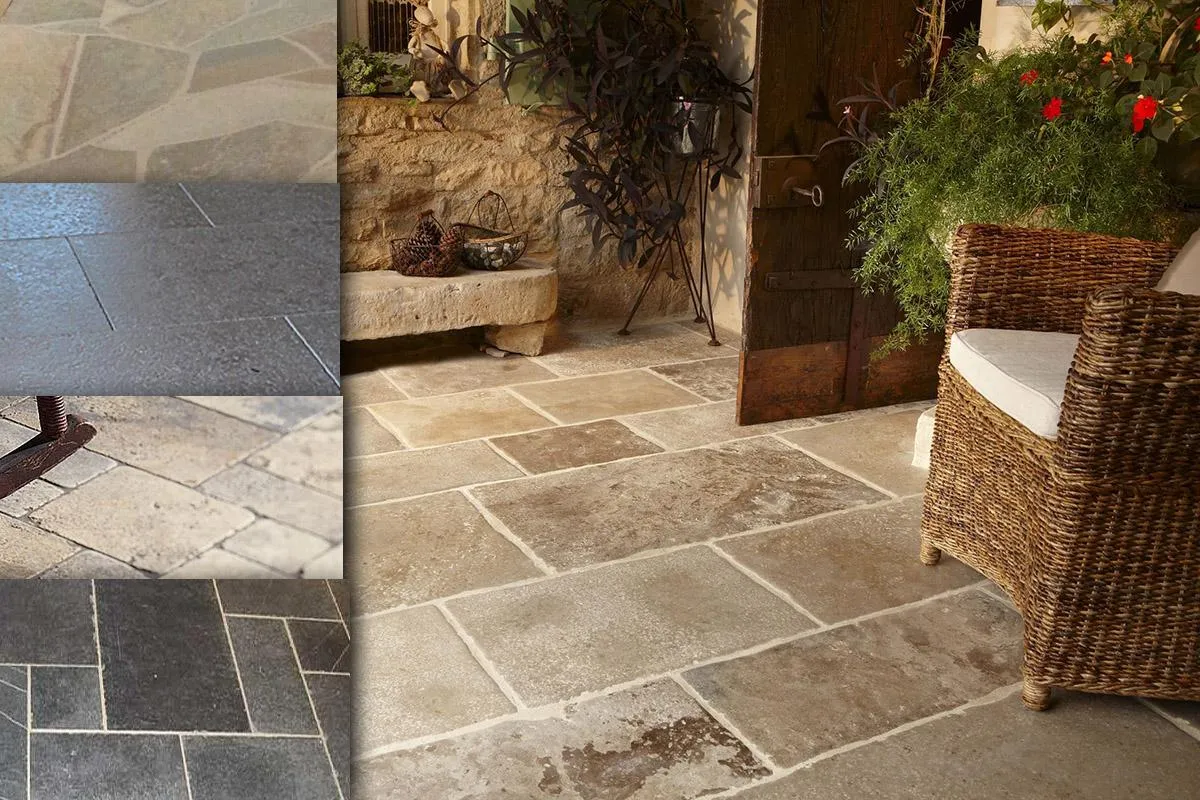
THE FOUR MOST POPULAR STONES
To help you make a smart choice when shopping for stone flooring, we think you should know about the top six most popular stone choices.
Granite is one of the hardest and densest of all the natural stone. It resists staining and scratching better than any other stone, due to its density.
Granite makes a powerful impact in kitchens, entryways, and bathrooms, or as an accent with other natural stone tiles.
Marble is crystallized limestone that comes in many different color variations and usually displays a veining pattern that adds to its uniqueness.
Marble is a timeless addition to any home. Marble is more porous than granite, making it more susceptible to staining and therefore is more suitable for your foyers, bathrooms, fireplaces, studies, or libraries. We would like to add a note to you on marble color. It is important to know that green and black marbles are not recommended for wet areas of the home, such as the shower. Green marbles will absorb water and then curl and warp.
Black marbles, when wet, can exhibit spalling at veins, which means small pieces of the stone may break away.
Limestone has a subtler look and is often offered in a honed or matte finish. Limestone is created by the accumulation of organic materials such as shells and coral. This stone will require preventative maintenance, as it is very porous. As it is a softer stone, it may not be suitable for all areas in the home because it will stain easily. Limestone should always be sealed to protect the stone’s natural beauty and performance. Travertine is unique looking due to the fill process. In its original form, travertine has thousands of holes running through it. These holes are filled and then the stone is polished. The stone polishes to a high sheen and the fill areas remain dull. Travertine will require you to have preventative maintenance performed over time, due to its porosity.
Slate, a rustic looking stone, varies in colors and shades in warm and earthy tones. Slate has some of the most dramatic color variations from tile to tile. Slate is extremely durable and can be used in both indoor and outdoor installations. All slate has natural clefting along the surface that gives this stone its unique layered look.
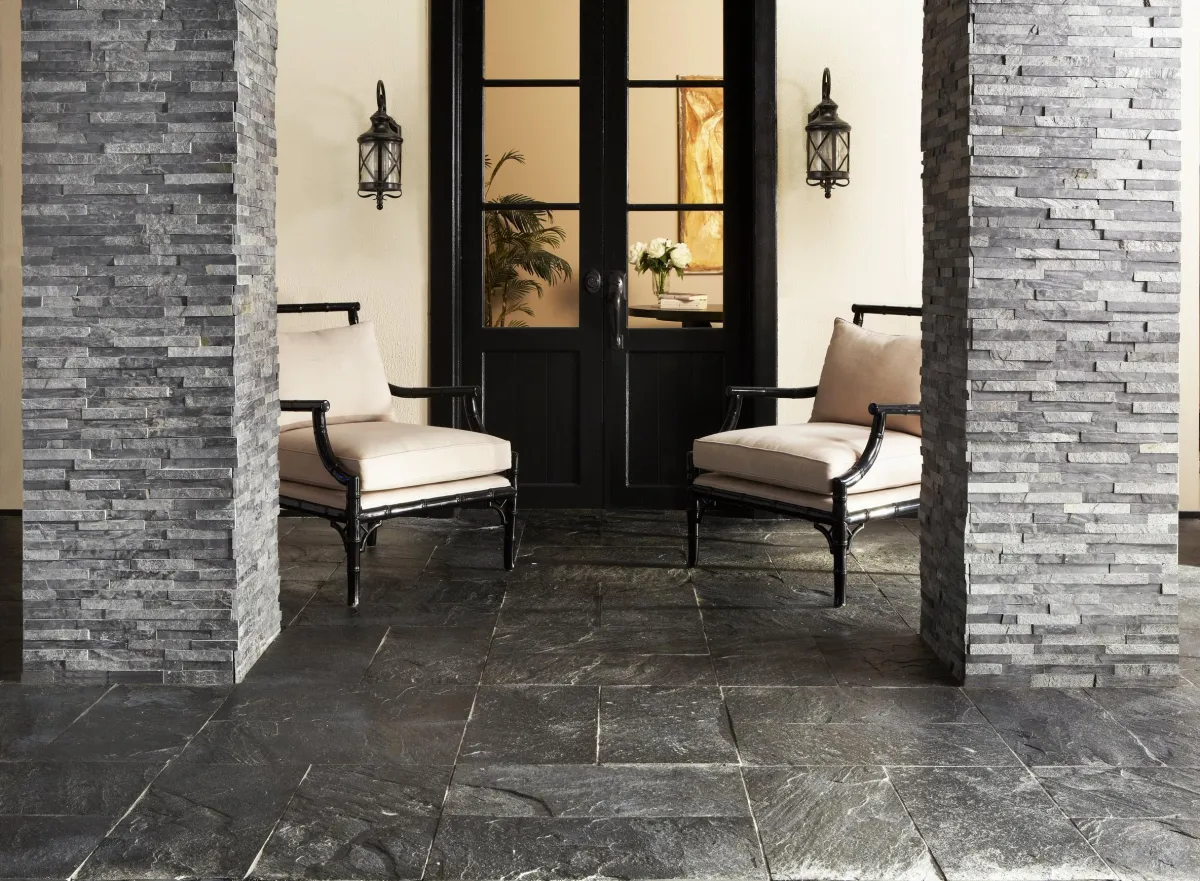
KNOW THE ENTIRE COST OF OWNERSHIP
The “cost per square foot” of your natural stone floor is just one component of the entire project cost. To ensure that there are no surprises and that the stone you choose fits in your overall budget, be sure to ask us to calculate the total cost of your floor covering project. Other potential expenses you may incur might be furniture removal, disposal of old floor covering, subfloor preparation, product delivery, and installation. In addition to the project cost, you should also know the cost of cleaning to maintain the beauty and life of your natural stone floor.
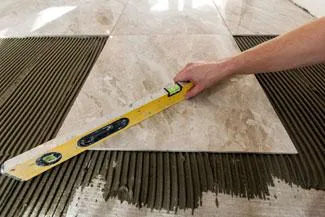
BEING PREPARED WILL HELP THE INSTALLATION RUN SMOOTHLY
The earth has been preparing your natural stone for millions of years. We want you to be prepared the day that the stone arrives to beautify your home. There are a few key things you should know before installation day.
Installing stone flooring is heavy, labor intensive, difficult work. We strongly recommend you call upon a reliable, seasoned, dedicated professional to install your natural stone floor. That way you can be assured of a beautiful, efficient, and correct installation.
Remove all furniture and other objects from the area where the installation will take place. Be aware that the area of installation must be climate controlled. Indoor humidity should be maintained between 45-65%. Please consider how your old flooring will be taken up and disposed of. Remove all old floor covering at least one day prior to installation of your new floors. If removing old carpet, please leave tack strips in place and pull the staples out of the floor from the original pad. Prepare your existing subfloor or put in a new subfloor if needed. Make sure the subfloor is as clean and level as possible.
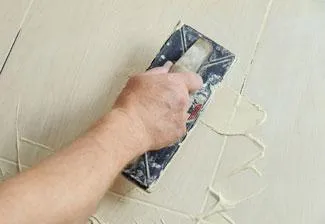
WHAT TO DO ON INSTALLATION DAY
Be prepared to be home on the day of your installation. Your installers will use a variety of tools and techniques that can make the work area hazardous, so make sure that children and pets are kept out of the work area on installation day. In some cases, moldings, and baseboards need to be removed for installation. We recommend that prior to the completion of the installation, you do a walk-through with the chief installer. This will give you the opportunity to ask any questions and to be clear on any final details.

WHAT TO DO AFTER INSTALLATION DAY
Good ventilation should be established for 48-72 hours after installation. Painted baseboards, woodwork, and paint may need retouching after the installation is complete. If necessary, this will be your responsibility. When your new floor is installed, there is always the possibility that the doors may not clear the new floor and swing freely. You may need to arrange for a qualified carpenter to help rehang or shave down your doors.

PROPER MAINTENANCE FOR NATURAL STONE IS NECESSARY
In this section, we have outlined what you need to know about caring for your beautiful stone today and for many years to come. Knowing what is expected of you regarding upkeep can be a determining factor in which type of natural flooring you choose to buy.
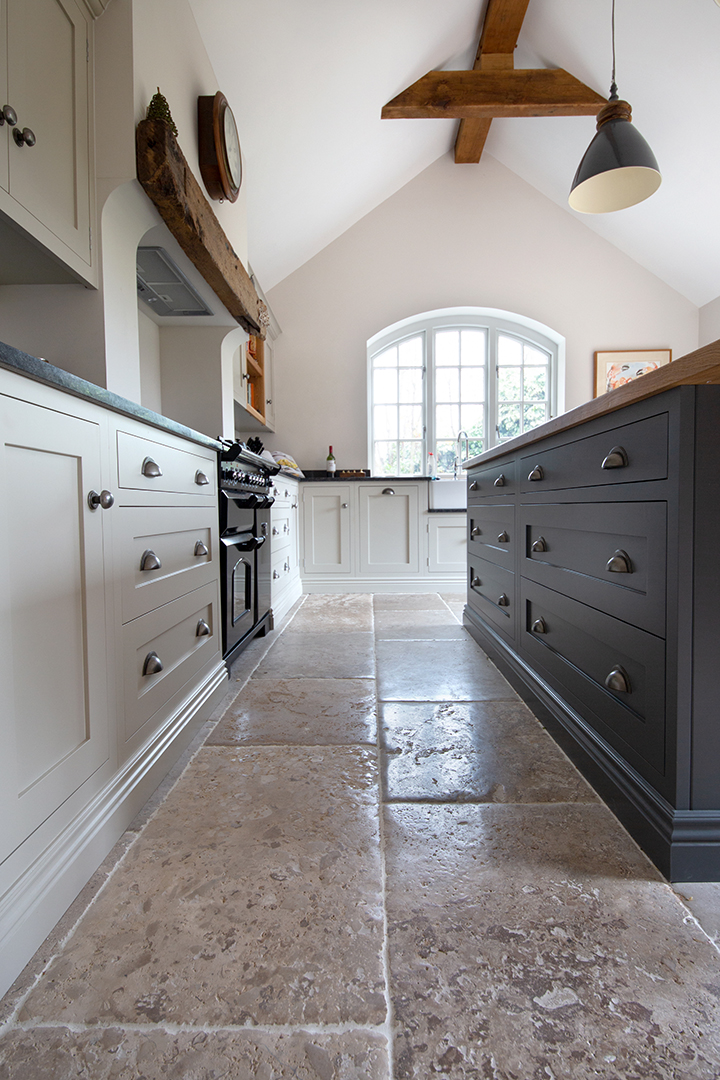
KEEP YOUR FLOORS CLEAN
Sand, dirt, and grit do the most damage to natural stone surfaces due to their abrasiveness. Floors should be dust mopped frequently using a clean, dry, dust mop or broom. A vacuum cleaner can be very helpful but use one without a beater bar to avoid scratching your beautiful floor. Vacuum attachments can be great for hard-to-reach areas. Walk-off mats or area rugs on either side of exterior entrances will help collect loose dirt before it reaches your stone floor.
Call on us to suggest specialty products designed for cleaning your new stone floors. A neutral pH detergent or pure soap can be used with warm water for spills or periodic cleaning. Be sure to rinse the floor thoroughly and dry the surface with a soft, clean cloth. Too much cleaner or soap may leave a film or cause streaks. Do not use products that contain lemon juice, vinegar, or other acids on marble, limestone, or travertine. Avoid using products that contain abrasive or ammonia-based cleaners. These products will dull the luster of your stone.

SEAL YOUR STONE
Your stone will require regular sealing. It is recommended that you seal your stone at least once per year. Stone sealer can be purchased at most stores. We recommend the best quality and an impregnating type if possible. Typically, sealing can be done by you and does not require a professional. However, if you have a large area of flooring or large showers you may need some assistance.
Acid-Washed Finish
An acid-washed finish is shiny with small etching marks (pits in the surface.) This finish shows fewer scratches and is much more rustic in appearance than a honed finish. Most stones can be acid-washed but the most common are marble and limestone. Acid washing is also a way to soften the shine on granite.
Brushed Finish
Brushed features a worn-down look achieved by brushing the surface of the stone, simulating natural wear over time.
Bull Nose Edge
One of two types of edges for natural stone floor tile. A polished bull nose edge has a rounded or curved appearance.
Calibrated
During this stage, the stone slab’s surface is worked down to a relatively uniform thickness across the length of the material.
CBU
Wood subfloors usually require a CBU or cement backer unit for support and a moisture barrier.
Ditra
An underlayment that provides a solid foundation for the tile, while still allowing for slight movement of the substrate without damage. Plus, in the event that water penetrates the grout, in a bathroom for example, it provides a protective waterproof barrier.
Fabricator
At the fabricator’s facility the natural stone slabs are customized for specific installations.
Flamed Finish
A flamed finish is achieved by heating the surface of the stone to extreme temperatures, followed by rapid cooling. The surface of the stone pops and chips leaving a rough, unrefined texture. This process is usually done with granite. Flamed granite has a highly textured surface, making it ideal for areas where slip resistance might be a concern, like shower areas.
Granite
An igneous stone that is extremely hard, dense and resistant to scratches and acid etching. It is an ideal stone for use in flooring and in food preparation areas. Hundreds of varieties of granite exist.
Honed Finish
A honed surface provides a flat, matte or satin finish creating a more informal and softer look. This finish is created by stopping short of the last stage of polishing. A honed finish shows fewer scratches, and requires very little maintenance.
Igneous Rock
Formed when molten rock (called lava or magma) cools and hardens. Granite is an example of an igneous rock.
Limestone
Another sedimentary stone, it’s formed from calcite and sediment and comes in many earthen colors.
Manufactured Stone / Agglomerate Stone
This is a synthetic stone made from natural stone chips suspended in a binder such as cement, epoxy resins or polyester. Some of the most popular types of manufactured stone products are those made mostly of quartz. The natural quartz gives the product depth and radiance while at the same time strength and consistency. Manufactured Stone is strong, it has four times the flexural strength of granite, so there’s less chance of chipping or cracking. It’s also called Agglomerate Stone. The most well known agglomerated stone is poured-in-place terrazzo, used in building for thousands of years.
Marble
A derivative of limestone. It is a metamorphic stone that can be polished. Marble is characteristically soft and easily scratched or etched by acids. There are countless types of marble from around the world.
Metamorphic Rock
Created when other kinds of rocks are changed by great heat and pressure inside the earth. Marble, slate and quartzite are examples of metamorphic rocks.
Polished Surface Finish
A polished surface creates a beautiful glossy shine from the natural reflection of the stone’s crystals. The mirror-like shine is accomplished by using progressively finer polishing heads during the polishing process, similar to the way that sandpaper smoothes hardwood furniture.
Porosity
The amount and size of the pores in a stone. Travertine is very porous and granite is not.
Quarry
For millions of years, a combination of heat and pressure created blocks of natural stone, including granite, marble, travertine, limestone, and slate. As the earth's crust began to grow and erode, it pushed minerals up from its core, forming massive rock deposits, which we refer to as “quarries”.
Sandstone
A sedimentary stone that is primarily composed of loose grains of quartz sand that are rough in texture. A number of varieties are available.
Saw-Cut Refined Finish
Saw-cut refined offers a matte finish. After initial cutting, the stone is processed to remove the heaviest saw marks but not enough to achieve a honed finish. You can purchase granite, marble and limestone this way, typically on a special order basis.
Sedimentary Rock
Formed from biological deposits that have undergone consolidation and crystallization. Limestone and sandstone fall into this category.
Slab
Blocks of stone that have been extracted from the earth and cut.
Slate
A metamorphic stone that has a sheet-like structure. It is composed of clay, quartz and shale, and comes in a multitude of colors including reds and greens.
Split Faced Finish
Split-faced gives you a rough texture, but one not as abrasive as flamed. This finish is typically achieved by hand cutting and chiseling at the quarry, exposing the natural cleft of the stone. This finish is primarily done on slate.
Stone Tile
The typical natural stone floor tile sizes are 12”x12”, 13”x13”, 16”x16” and 18”x18.
Straight 90-Degree Edge
One of two types of edges for natural stone floor tile. A polished straight 90- degree edge creates a more modern and clean look.
Substrate
The surface on which the stone tile is laid.
Thinset
A cement based adhesive that is applied to the surface with a notched or grooved trowel. The tile is then placed into the thinset and pressed firmly into place. Since stone tiles vary in thickness and size, the amount of thinset mortar applied is adjusted where needed.
Travertine
A crystallized, partially metamorphosed limestone which, because of its structure, can be filled and honed and is dense enough to be a type of marble.
Tumbled Finish
Delivers a smooth or slightly pitted surface, and broken, rounded edges and corners. There are several methods used to achieve the tumbled look. 3/8” thick tiles can be tumbled in a machine to achieve the desired look, or 3cm tiles can be tumbled and then split, creating two tiles that are tumbled on one side. Marble and limestone are primary candidates for a tumbled finish.
Unsanded Grout
A dry, Portland cement-based product that is mixed with water onsite. The grout mixture is spread over the tiled area with a grout float to fill in all the joints. A sponge is then used to remove excess grout from the surface of the tile while leaving the grout in the joints to cure. Un-sanded grout is most commonly used in natural stone installations because it is able to fill the small joints more easily and will not scratch soft stones like sanded grout.
About Us
Transform Your Space with Top-Quality Craftsmanship
Contact Us
5282 Crookshank Rd, Cincinnati OH 45238
Phone (513) 922-3466
Copyright© 2025 Schoch Tile - All Rights Reserved.
